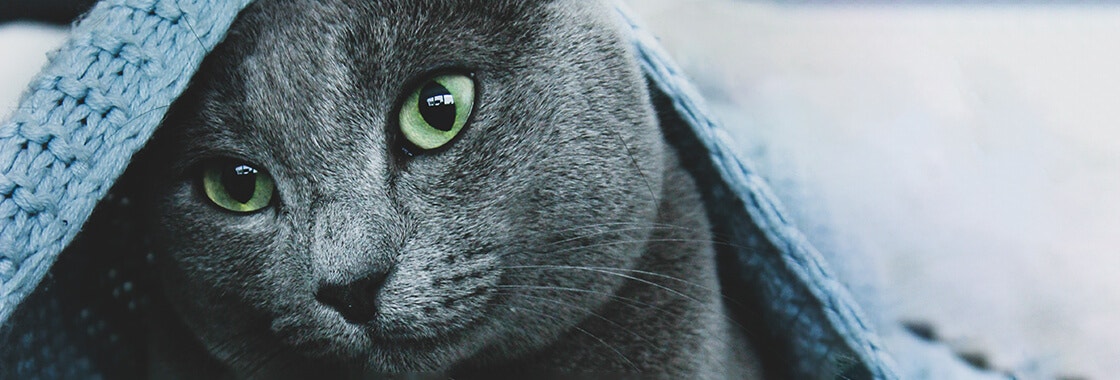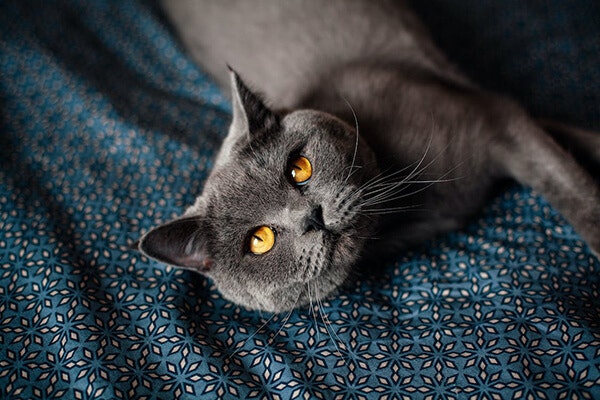- Homepage
- Blog
- Bonding & Care
- Why Do Cats Purr Meaning
Why do cats purr? They're trying to tell you something!


Share
Along with meowing, trilling and chirping, cats purr as a way of expressing themselves. What it means when a cat purrs is fascinating. It is a form of feline communication that covers a range of emotions besides contentment, all of which we will explore further. Inherited from some of their wild ancestors, such as lynxes and bobcats, cat species that purr cannot roar like a lion or tiger. Nobody is sure why cats started to purr; one theory is that mother cats used purring to hide the mewing of her kittens from predators, or to keep them close as kittens are born blind and deaf. Others believe that kittens purr from just a few days old to help their mothers locate them. Whatever the reason, today’s domestic cat purrs in many situations such as:
- Cats purr while they are being stroked to show their happiness; purring during a cuddle is like a feline smile
- Cats purr before feeding to indicate that they are hungry; your cat may combine a purr with a meow almost like a baby crying
- Cats purr when hurt or injured to soothe themselves; research has revealed that the vibration of a purr may actually help cats to heal
- Cats purr during stressful times; the low frequency vibration of a purr can help cats to relax and breathe more calmly
What does it mean when a cat purrs?
As we now know that communication is the main reason why cats purr, it’s useful to be able to distinguish between different purrs. Some are good vibrations, and explain why cats purr when being stroked, but the tremor of a cat’s voice box can also indicate self-soothing, healing or even anxiety. Here are the main emotional drivers that cause cats to purr:
The sound of purr-fect love!
If you’re wondering why a cat purrs when you pet them, it is because they feel secure in their surroundings and your love. A cat purr is them vocalising their affection back to you, which can often be accompanied with your cat licking you, a head butt, or kneading as delightful signs of the close bond between you. Happiness as a result of being with you can also explain why a cat purrs so loudly.
Purring for your attention
As cats can make different kinds of purring sounds, you may notice that your cat combines purring with a small cry to get your attention and highlight an immediate need. It triggers a nurturing instinct in us, just like the one we have for a baby, and if the purring is high-pitched and urgent, it’s often a strong indication that it’s feeding time, that your cat wants to go outside or they have some other need.
Purring as part of the healing process
Repetitive purring creates a vibration in a cat’s body that can lower a cat’s stress hormones and blood pressure in order to help with healing from wounds, muscle strains and even broken bones. Observations of cats with respiratory issues have also shown that they may purr to help them breathe more easily.
Purring to reduce anxiety and self-soothe
Rhythmic purring can help a cat to relax and stay calm during a stressful situation such as being approached by a dog or a frightening visit to the vet. Purring in scary times may even release comforting chemicals called endorphins which supports the theory that above all, purring is an emotional expression that starts in the brain.
Why do cats purr when you stroke them?
Cats often purr loudly when you stroke them as a sign of their love for you, and to tell you how happy they’re feeling, just like a dog would wag its tail. The reciprocation of your love can be especially true when your cat approaches you for affection, as they are actively choosing when to seek out human touch on their terms which is favoured to an independently-minded cat.
Why do cats purr and then bite you?
Cats sometimes bite while they are being stroked because they can become overstimulated , so don’t take it too personally! Repetitive stroking can also cause a build up of static electricity and send a shock wave through your feline that understandably causes an adverse reaction.
Are cats really happy when they purr?
Happiness is certainly one of the emotions that cats are communicating when they purr, whether that’s contentment with the world in general or because they are responding to your affectionate touch. Purring can also, however, incubate that your cat is hungry, stressed or even self-soothing if they are injured or in pain.
How do cats make a purring sound?
Purring starts from a ‘neural oscillator’ in a cat’s brain which sends messages to muscles around the larynx which begin to twitch at 25 to 150 vibrations per second (Hz). As the cat breathes in and out, the air passing over the vibrating chords causing the purring sound which Dr Karen Overall, the animal behaviourist, calls “opera singing for cats”. Purring is sometimes so low that it feels more like a vibration than an actual sound.
Why cats purr is complicated. While we agree with the author, Jonathon Payne, who writes that “there’s nothing more peaceful than a sleeping, purring cat”, this unique feline vibrato is a multi-dimensional form of communication. As the meaning of a purr ranges from being a way that cats show affection to a sign of distress or pain, giving it the correct context is important. Why not become an expert in understanding your cat’s body language, from the meaning behind different tail positions to why they have flattened ears, and get in tune with what your cat is feeling. Only to a certain extent though. After all, the real charm of a cat will always be its mystery.



